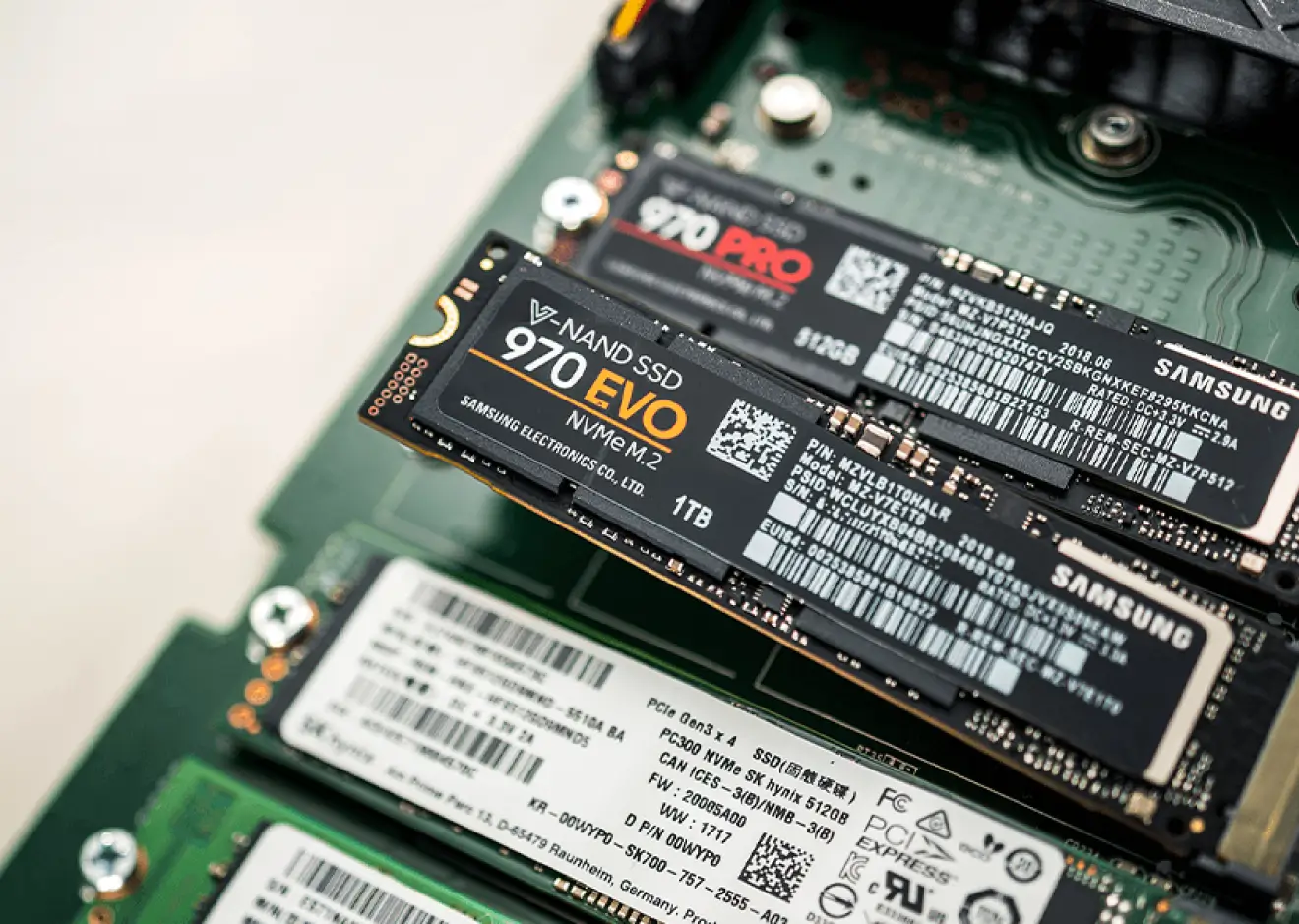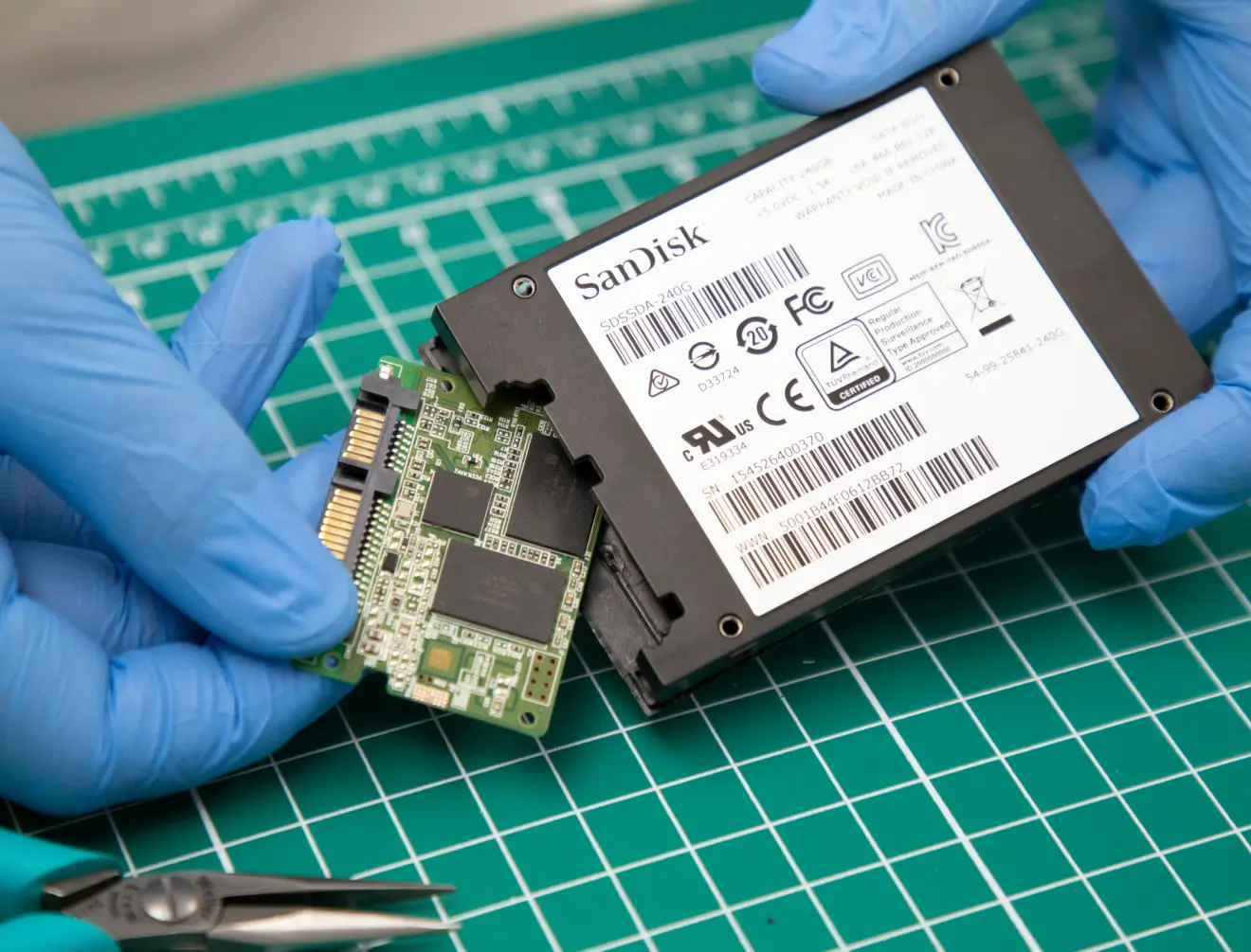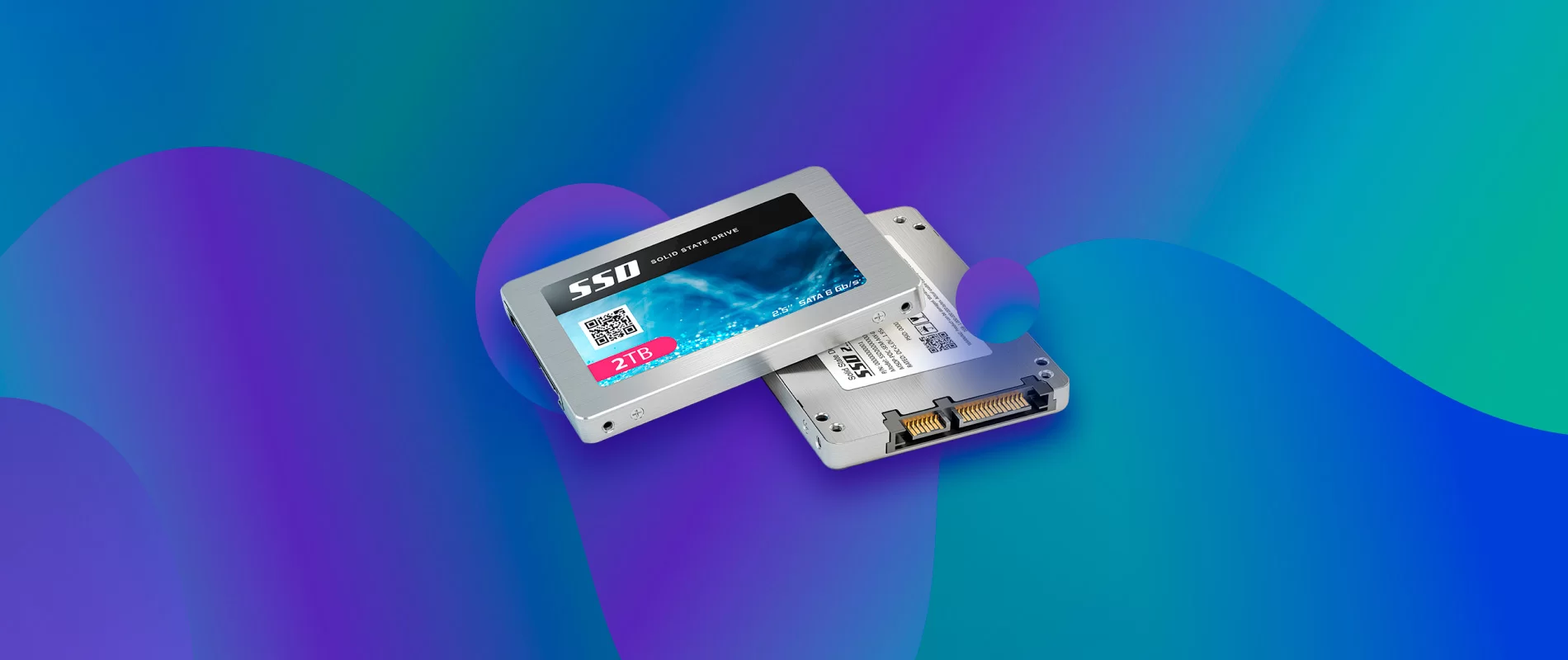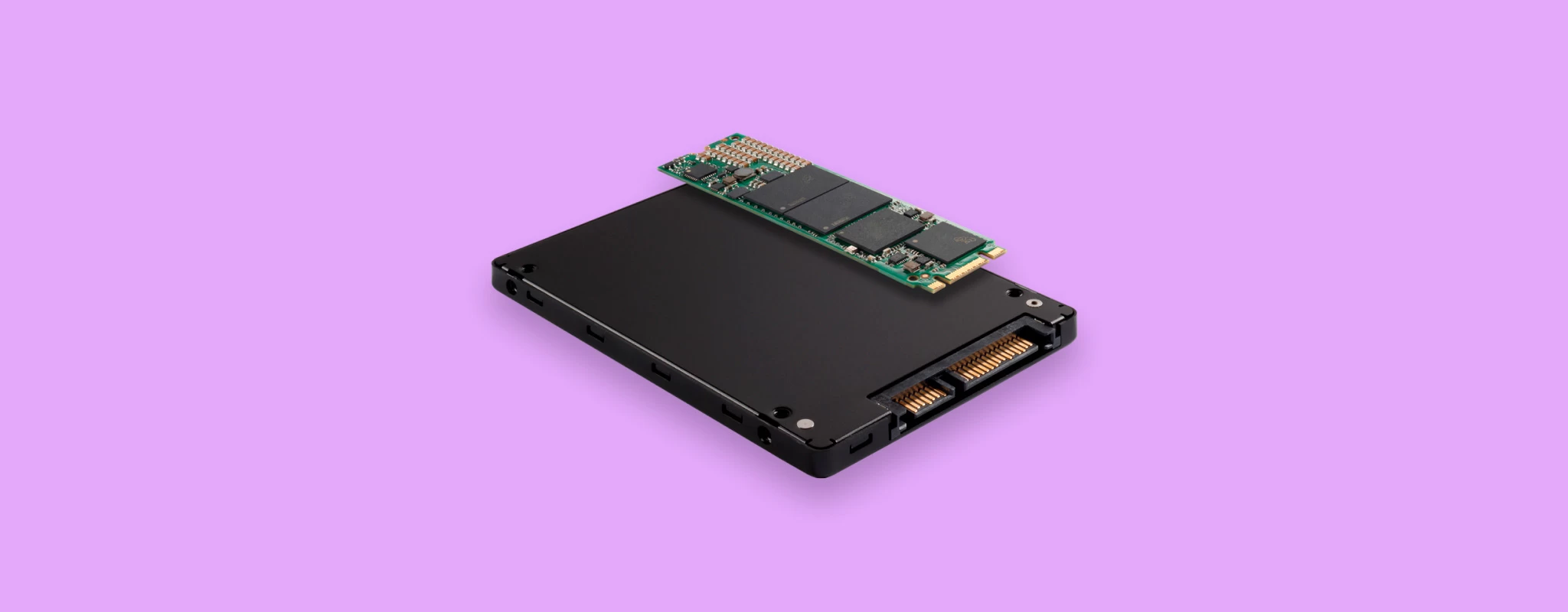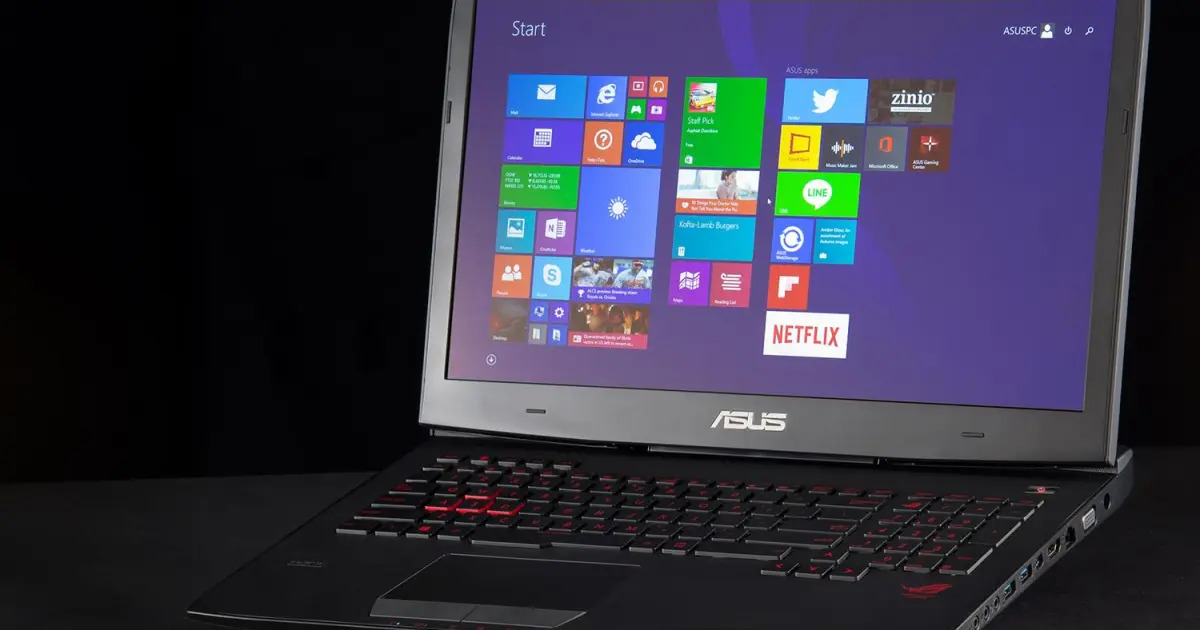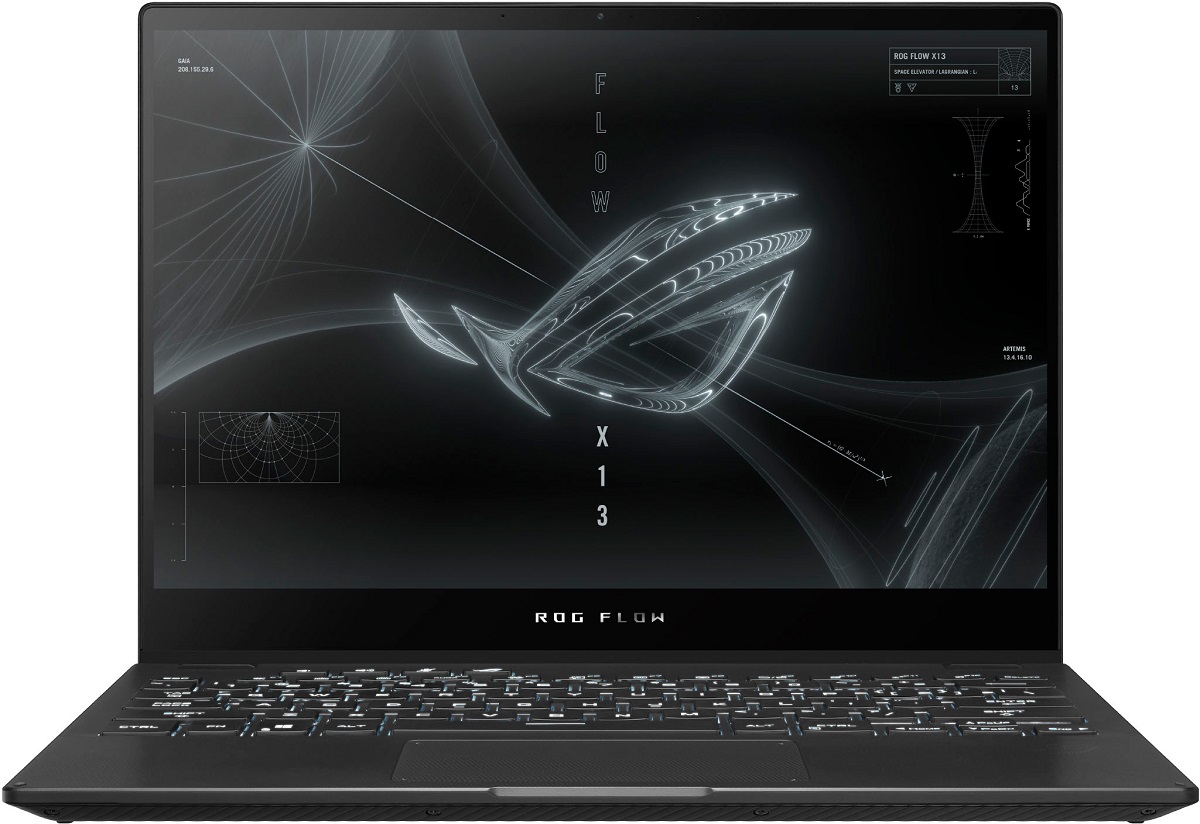What is an SSD?
Solid State Drives (SSDs) have revolutionized storage in modern computers and electronic devices. Unlike traditional hard disk drives (HDDs) that rely on spinning disks and magnetic storage, SSDs use flash memory to store data. This difference in technology brings about several advantages and benefits.
First and foremost, SSDs are significantly faster than HDDs. This means that tasks such as booting up your computer, launching applications, and transferring files can be done much quicker. With faster read and write speeds, SSDs can greatly improve overall system performance and responsiveness.
Moreover, SSDs are more reliable and durable compared to HDDs. Since there are no moving parts, there is less risk of mechanical failure, making SSDs less prone to damage from accidental drops or impacts. Additionally, SSDs are less affected by temperature fluctuations and magnetic fields.
Another advantage of SSDs is their compact design. With no need for bulky disk platters and read/write heads, SSDs can be much smaller and lighter, making them ideal for portable devices such as laptops and tablets where space and weight considerations are important.
Furthermore, SSDs consume less power than HDDs, resulting in longer battery life for laptops and other portable devices. This energy efficiency is particularly beneficial for users who are frequently on the move or rely on their devices for extended periods.
In terms of noise, SSDs are virtually silent during operation since there are no spinning disks. This can create a quieter and more peaceful environment, especially for those who work in noise-sensitive environments or simply want to eliminate distracting computer noises.
Overall, SSDs provide a multitude of advantages over traditional HDDs. They offer faster performance, higher reliability, compact design, lower power consumption, and noise-free operation. With these benefits, it’s no wonder that SSDs have become the preferred choice for both average computer users and professionals who require high-performance storage solutions.
Signs that your SSD may be dead
While SSDs are known for their reliability, they are not immune to failures. If you suspect that your SSD is dead or malfunctioning, there are several telltale signs to look out for.
One of the most obvious signs of a dead SSD is when your computer fails to recognize or detect the drive. If your SSD is not listed in the BIOS or is not visible in the operating system, it could indicate that the drive has failed.
Another indicator of SSD failure is frequent and unexplained system crashes or freezes. If your computer suddenly becomes unresponsive or experiences random crashes, it may be due to a faulty SSD. Keep in mind that other factors could also cause these issues, so it’s important to rule out other potential causes.
Slow performance can also be an indication of a dying SSD. If you notice a significant decrease in the speed of your system or find that tasks that used to be quick are now taking much longer, it could be a sign of impending SSD failure. However, it’s worth mentioning that slow performance can also be caused by other factors such as insufficient memory or a fragmented storage drive.
Data corruption or loss is another clear indication that your SSD may be dead. If you start experiencing frequent errors when accessing files or find that your data is suddenly missing or inaccessible, it could be a sign of SSD failure. It’s important to regularly backup your data to minimize the risk of data loss.
Strange noises coming from your computer can also point to SSD problems. While SSDs are typically quiet, if you hear clicking, grinding, or other unusual sounds coming from your system, it might be a sign that the SSD is failing.
Lastly, if you’ve ruled out other hardware and software issues and are still experiencing persistent and unexplained problems with your computer, it’s worth considering the possibility of a dead SSD. SSD failures can manifest in various ways, so it’s essential to pay attention to any unusual behavior or symptoms that may indicate an issue with your SSD.
Remember that the presence of one or more of these signs does not guarantee that your SSD is dead, but it’s certainly worth investigating further. If you suspect your SSD may be failing, it’s recommended to seek professional assistance or consult your device manufacturer for further troubleshooting and support.
Causes of SSD failure
While Solid State Drives (SSDs) are generally more reliable than traditional hard disk drives (HDDs), they can still encounter failures. Understanding the common causes of SSD failure can help you take proactive measures to prevent such issues. Here are some of the main causes of SSD failure:
1. NAND Flash Wear-out: SSDs use NAND flash memory to store data. Over time, repeated read and write operations can wear out the NAND flash cells, reducing their lifespan. This wear-out process is known as “NAND flash wear-out” and can result in data loss or drive failure.
2. Power Surges or Electrical Issues: Sudden power surges, spikes, or voltage fluctuations can damage the delicate electronic components of an SSD. These electrical issues can lead to data corruption or physical damage, rendering the SSD inoperable.
3. Firmware or Controller Malfunctions: The firmware of an SSD controls its operation and manages the data flow to and from the NAND flash memory. If the firmware becomes corrupted or malfunctions, it can cause the SSD to fail. Similarly, issues with the SSD controller, which manages the overall functioning of the drive, can also lead to failure.
4. Overheating: SSDs generate heat during operation, and excessive heat can degrade the performance and reliability of the drive. Prolonged exposure to high temperatures can even cause the SSD to fail. It is important to ensure that your computer or device has adequate cooling measures in place to prevent overheating.
5. Physical Damage: While SSDs are generally more resilient than HDDs, they can still be susceptible to physical damage. Dropping, hitting, or mishandling the SSD can result in internal components becoming misaligned or damaged, leading to drive failure.
6. Manufacturing Defects: Although rare, manufacturing defects can occur in SSDs. These defects can manifest in various ways, such as faulty components, poor soldering, or inadequate quality control. Manufacturing defects can cause SSDs to fail prematurely or exhibit erratic behavior.
It’s important to note that while these are some of the common causes of SSD failure, not all failures are predictable or preventable. SSDs have a limited lifespan, typically measured in terabytes written (TBW), and will eventually wear out over time. Regularly backing up your data and implementing proper cooling and power management practices can mitigate the risk of failure, but it’s always important to be prepared for the possibility of an SSD failure by having a backup strategy in place.
How to troubleshoot a potentially dead SSD
If you suspect that your Solid State Drive (SSD) may be dead or malfunctioning, there are several steps you can take to troubleshoot the issue before considering it completely non-functional. Here are some methods to help you diagnose and potentially revive a dead SSD:
1. Check the physical connections: Ensure that the SSD is properly connected to your computer or device. Sometimes, a loose or faulty connection can cause the drive to be undetected.
2. Test with different cables and ports: Try using different cables and ports to rule out any issues with the connections. A faulty cable or port could be the reason why your SSD is not working.
3. Verify power supply: Ensure that your SSD is receiving sufficient power. Faulty power supply or insufficient power delivery can affect the drive’s performance or prevent it from functioning altogether.
4. Use diagnostic tools: Many SSD manufacturers provide diagnostic software that can help identify issues with the drive. These tools can provide information on the health status, firmware version, and potential errors of the SSD.
5. Try the SSD with a different computer: If possible, test the SSD on another computer or device to see if it is detected and functions properly. This will help determine if the issue lies with the SSD or with your specific computer setup.
6. Update firmware: Check for any firmware updates for your SSD. Updating the firmware can resolve compatibility issues and improve overall performance.
7. Reset the SSD: Some SSDs have a built-in reset or power cycle feature. Refer to the manufacturer’s instructions to perform a reset. This can sometimes resolve minor issues and re-initialize the SSD.
8. Consult professional help: If you have tried the above steps and still cannot revive your dead SSD, it may be time to seek professional assistance. Data recovery services or contacting your SSD manufacturer’s support team can provide expert guidance and potential solutions.
It is important to note that troubleshooting methods can vary depending on the specific SSD model and the computer setup. Always refer to the manufacturer’s documentation and online resources for specific troubleshooting instructions and support.
Remember that these troubleshooting steps may not always revive a completely dead SSD. In some cases, if the drive is damaged beyond repair or has experienced a critical failure, data recovery may be the only option left.
Steps to recover data from a dead SSD
Experiencing a dead Solid State Drive (SSD) can be distressing, especially if you have important data stored on it. However, there are still methods you can try to recover your data from a dead SSD. Here are the steps you can take to potentially retrieve your valuable files:
1. Disconnect and reconnect the SSD: Sometimes, a loose connection may cause the SSD to be undetected. Disconnect the SSD from your computer or device, wait for a few moments, and then reconnect it firmly. Ensure that the connection is secure and try accessing the drive again.
2. Use data recovery software: There are various data recovery software programs available that can help recover files from a dead SSD. Install a trusted data recovery application on a different storage device, such as a USB drive or another computer, and run the software to scan and retrieve your data.
3. Consult professional data recovery services: If you are unable to recover data using software solutions or if your SSD has suffered physical damage, it may be necessary to seek professional data recovery services. These experts have specialized tools and knowledge to recover data even from severely damaged SSDs.
4. Consider using a bootable USB drive: In some cases, you may be able to recover data by booting your computer from a USB drive containing a lightweight operating system and data recovery tools. This bypasses any potential issues with the operating system installed on the SSD and allows you to access and retrieve your files.
5. Clone the SSD: If you have another working SSD or storage device available, you can try cloning the dead SSD to the new drive using specialized cloning software. This method creates a replica of the SSD, making it possible to recover data from the clone.
6. Contact your SSD manufacturer: Reach out to the manufacturer of your SSD. They may have specific recovery methods or suggestions for dealing with a dead SSD. They might also provide warranty services or other support options to help retrieve your data.
It is important to note that data recovery from a dead SSD is not always guaranteed. The success of data recovery methods depends on the extent of the SSD failure and the condition of the stored data. It is highly recommended to regularly back up your important files to prevent permanent data loss in case of SSD failure.
Lastly, it is crucial to avoid attempting any physical repairs or disassembling the SSD yourself, as this can further damage the drive and make data recovery more challenging or even impossible. Seek professional help if you are unsure or uncomfortable with the recovery process.
When to consider replacing your SSD
Solid State Drives (SSDs) are known for their reliability and durability, but like any electronic device, they have a limited lifespan. There are several factors to consider when determining whether it’s time to replace your SSD. Here are some signs that indicate it may be time for a replacement:
1. Frequent and recurring errors: If you consistently experience errors when accessing files or encounter system crashes that cannot be resolved through other troubleshooting methods, it may indicate that your SSD is nearing its end of life. These errors can be a result of deteriorating NAND flash cells or other internal issues.
2. Reduced storage capacity: Over time, as you use your SSD and perform frequent read and write operations, its storage capacity may gradually diminish. If you find that the available storage space is significantly lower than the original capacity, it could be a sign that the SSD is reaching its limit.
3. Sluggish performance: As an SSD ages, its overall performance may begin to decline. You may notice longer loading times, slower boot-ups, and delays when accessing files. If these performance issues persist despite optimizing your system, it may be an indication that your SSD is no longer functioning optimally.
4. Unrecoverable data loss: If you experience significant data loss despite regular backups and data recovery attempts, it suggests that your SSD may have reached a critical point of failure. Continuous data loss can be a strong signal that it’s time to replace your SSD to prevent further data loss.
5. Warranty expiration: Most SSDs come with a manufacturer warranty, typically ranging from three to five years. If your SSD is approaching or has exceeded its warranty period, it may be a good time to consider replacing it. Although SSDs can still function beyond their warranty period, the chances of failure increase.
6. Incompatibility with modern technologies: As technology advances, new standards and interfaces emerge. If your SSD is not compatible with the latest connectors or interfaces, it may hinder your ability to maximize the performance and capabilities of your system. Upgrading to a newer SSD with compatible features ensures optimal compatibility and performance.
While these signs indicate that it may be time to replace your SSD, it’s important to remember that each situation is unique. Assess the severity and impact of the issues you are experiencing and weigh it against the cost and benefits of replacing your SSD. Consult the manufacturer’s recommendations and seek professional advice if needed to make an informed decision.
Lastly, when replacing your SSD, make sure to securely wipe or properly dispose of your old SSD to protect your data and privacy.
Preventive measures to prolong SSD life
Solid State Drives (SSDs) have a limited lifespan due to the nature of their NAND flash memory technology. However, there are several preventive measures you can take to prolong the life of your SSD and maximize its performance. Here are some valuable tips to help extend the longevity of your SSD:
1. Avoid excessive write operations: Each time data is written to an SSD, it puts wear on the NAND flash memory cells. To minimize unnecessary writes, avoid excessive file transfers, especially for non-essential files. Consider storing large files or frequently updated data on a separate drive or cloud storage.
2. Enable TRIM: TRIM is a feature supported by modern operating systems and SSDs that helps maintain the performance and lifespan of the drive. Enabling TRIM ensures that deleted files are properly marked as free space, allowing the SSD to efficiently manage its storage and avoid unnecessary wear leveling.
3. Update firmware: Keep your SSD firmware up to date. Manufacturers often release firmware updates that can address performance issues, improve compatibility, and enhance overall drive lifespan. Check the manufacturer’s website or their software utility for any available firmware updates.
4. Maintain adequate free space: SSDs perform best when they have free space to utilize for wear leveling and garbage collection. Aim to keep at least 10-20% of the SSD’s total capacity free at all times. This ensures the SSD has sufficient room for efficient data management and extends its lifespan.
5. Use optimized power settings: SSDs are not affected by fragmentation like traditional hard drives, so there is no need for frequent defragmentation. Disable automatic defragmentation in the operating system settings to prevent unnecessary write operations that can wear out the SSD.
6. Avoid extreme temperatures: Excessive heat can shorten the lifespan of an SSD. Ensure proper ventilation and cooling for your computer or device to prevent overheating. Similarly, avoid exposing your SSD to extreme cold as it can affect its performance and reliability.
7. Handle with care: SSDs are less prone to physical damage compared to traditional hard drives, but they are not immune. Treat your SSD with care and avoid dropping, mishandling, or subjecting it to unnecessary shocks or vibrations.
8. Regular backups: Although SSDs are more reliable than HDDs, unforeseen failures can still occur. Regularly back up your important data to an external storage device or cloud backup service. This ensures that even if your SSD fails, your important files are safely preserved.
By implementing these preventive measures, you can significantly extend the lifespan of your SSD and maintain its performance over time. It’s important to note that while SSDs do have a limited lifespan, following these guidelines can help you get the most out of your SSD investment.
Conclusion
Solid State Drives (SSDs) have become an indispensable part of modern computing, offering faster performance, higher reliability, and greater durability compared to traditional hard disk drives (HDDs). Understanding the signs of a potentially dead SSD, the causes of failure, and the steps to troubleshoot and recover data can save you from the frustration of losing valuable files and help you make informed decisions.
If you suspect your SSD is dead, look out for signs such as undetection, system crashes, slow performance, data corruption, or strange noises. Troubleshooting steps may include checking connections, using diagnostic tools, updating firmware, or seeking professional assistance. Similarly, data recovery from a dead SSD may involve software solutions, professional services, or cloning the drive to a new one. However, prevention is always better than recovery.
Taking preventive measures to prolong SSD life is crucial. Avoid excessive write operations, enable TRIM, maintain adequate free space, update firmware, optimize power settings, handle SSDs with care, manage temperature, and regularly back up your data. These measures can significantly extend the lifespan of your SSD, enhance its performance, and provide peace of mind.
Inevitably, there may come a time when you need to replace your SSD due to frequent errors, reduced storage capacity, sluggish performance, unrecoverable data loss, warranty expiration, or incompatibility with modern technologies. Consider these factors and consult the manufacturer’s recommendations to make an informed decision.
By understanding the intricacies of SSDs and following preventive measures, you can optimize the lifespan and performance of your SSD, ensuring a reliable and efficient computing experience. As technology continues to advance, SSDs will continue to evolve, offering even greater capacities and faster speeds. Stay informed, stay proactive, and enjoy the benefits of this game-changing storage technology.







